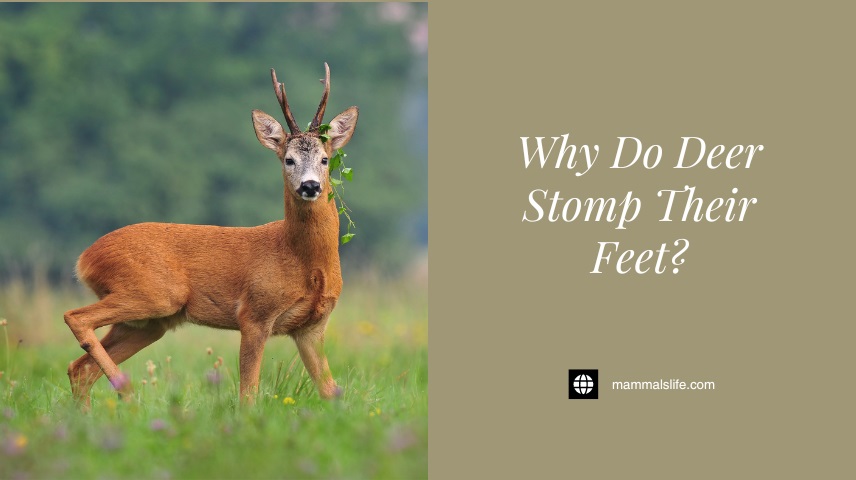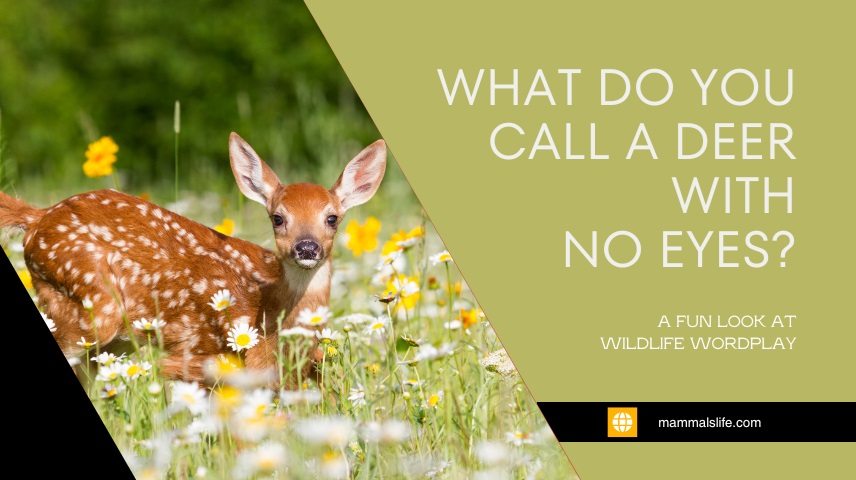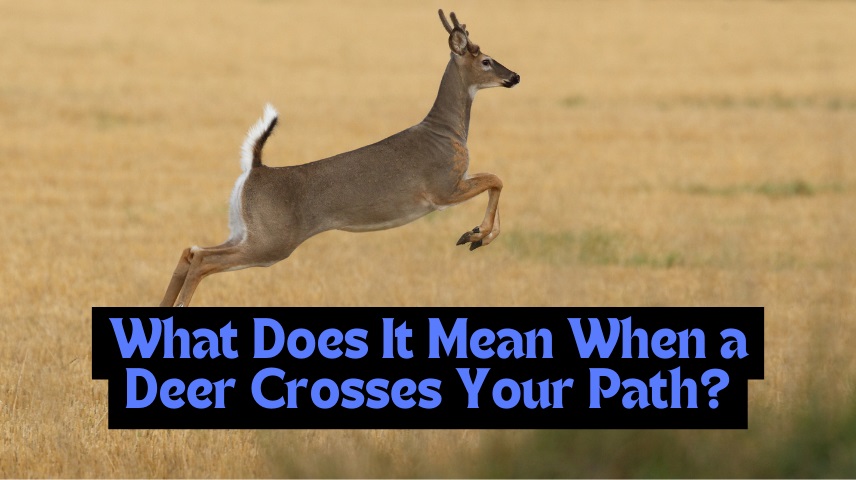Last Updated on February 22, 2025 by Mammals Life
Deer stomp their feet to warn other deer of potential danger. This behavior signals alertness and readiness to flee.
Deer are fascinating creatures often seen in forests and woodlands. They possess unique behaviors that help them survive in the wild. One notable behavior is foot stomping. This action serves as a warning signal, alerting other deer to possible threats.
Understanding why deer stomp their feet can provide insights into their survival instincts. It also highlights their communication methods within the herd. Observing these behaviors can deepen our appreciation of wildlife. By learning more about deer warning signals, we can better coexist with these graceful animals.
Deer Communication Methods
Deer are fascinating creatures with unique ways of communicating. They use various signals to convey messages. Understanding these methods helps us learn about their behavior. Let’s explore their body language and vocalizations.
Body Language
Deer often use body language to communicate. One common behavior is foot stomping. A deer stomps its feet to alert others of danger. This action can warn other deer nearby.
Foot stomping is not the only body signal. Deer also use their tails to communicate. A raised tail signals an alarm. A calm deer keeps its tail down. These signals help deer stay safe in the wild.
Deer also use their ears to show their mood. Forward-facing ears mean the deer is curious. Ears pinned back mean the deer feels threatened. By observing these signals, we can understand their feelings.
Vocalizations
Deer does not only rely on body language. They also use vocalizations to communicate. Fawns bleat to call their mothers. This sound helps them stay close to their family.
Adult deer use snorts to signal danger. A loud snort can scare off predators. Deer also grunt to communicate with each other. Each sound has a different meaning. By listening to these sounds, we learn about their world.
During mating season, bucks use vocalizations to attract does. These calls are important for reproduction. Each vocalization plays a key role in deer communication.
Understanding deer communication methods helps us appreciate these animals. By observing their body language and listening to their vocalizations, we gain insight into their lives.
Read More – How Rare Are Piebald Deer? Exploring the Genetics And Occurrence of Piebaldism
The Purpose Of Foot Stomping
Deer are fascinating creatures with unique behaviors. One such behavior is foot stomping. But why do deer stomp their feet? This action serves important purposes within deer communities. Let’s explore the reasons behind this intriguing behavior.
Alerting The Herd
Deer live in groups, also known as herds. When a deer senses danger, it needs to alert others. Foot stomping is an effective warning signal. This action creates noise, grabbing the attention of nearby deer. The herd becomes aware of potential threats quickly.
Foot stomping is often accompanied by other signals. These include tail flicking and vocalizations. This combination of signals ensures the herd stays safe. Understanding these signals can help us better appreciate deer behavior.
Assessing Threats
Deer also stomp their feet to assess threats. This behavior helps them gather more information about their surroundings. By stomping, they might provoke a reaction from potential predators. If a predator moves, the deer can better judge the level of danger.
Foot stomping allows deer to stay cautious. It provides them with a way to test their environment. This behavior is vital for their survival in the wild.
Read More – What Is a Piebald Deer? A Comprehensive Guide to These Rare And Beautiful Deer
Body Posture And Stomping
Deer communicate through body language. One key signal is foot stomping. This behavior can indicate different things depending on the situation. Understanding these signals can help us learn about deer behavior.
Defensive Stance
When a deer senses danger, it adopts a defensive stance. The deer stands tall and alert. It raises its head to scan the area. The ears are perked up and twitching. In this stance, the deer is ready to react.
Foot stomping often follows this stance. The deer stomps its foot to create noise. This warns other deer of potential danger. The noise also startles predators, giving the deer a chance to flee.
Aggressive Signals
Deer also stomps to show aggression. This happens when they feel threatened by another animal. The aggressive stance includes a lowered head. The deer might also snort or grunt. These sounds add to the warning.
In some cases, the deer will charge at the threat. The stomping is a clear sign to back off. This behavior is common during mating season. Bucks use it to establish dominance.
| Stance | Behavior | Purpose |
|---|---|---|
| Defensive | Stands tall, ears perked, foot stomping | Warns others, startles predators |
| Aggressive | Lowered head, snorting, foot stomping | Shows dominance, deters threats |
Understanding deer body language helps us coexist with them. Observing these signals can prevent dangerous encounters. Deer are fascinating creatures with complex communication methods.
Environmental Triggers
Deer are known for their unique ways of communicating danger. One such behavior is foot stomping. This behavior often arises due to various environmental triggers. Understanding these triggers can help us comprehend deer warning signals better.
Predator Presence
Deer are always on the lookout for predators. They rely on their keen senses to detect any threats in their environment. When a deer senses a predator, it stomps its feet. This action serves multiple purposes:
- Alerting other deer in the vicinity
- Attempting to intimidate the predator
- Gaining a better sense of the ground
By stomping, deer can communicate the presence of danger quickly and effectively. This ensures the herd’s safety and readiness to flee.
Human Encounters
Deer also stomp their feet when they encounter humans. This is especially common in areas where human activity is prevalent. The foot stomping in this scenario serves as a warning signal to both the deer and the human.
The deer tries to determine if the human poses a threat. If the human remains still, the deer might calm down. If the human moves closer, the deer will likely flee.
In suburban areas, deer have become more accustomed to humans. Yet, they still use foot stomping as a precautionary measure. This behavior helps them stay alert and avoid potential danger.
Understanding these environmental triggers gives us insight into deer behavior. This knowledge can help us coexist with these magnificent creatures more harmoniously.
Read More – Is Seeing Deer a Good Omen? Insights into the Symbolic Power of Deer
Comparing Stomping Across Species
Deer stomping is a fascinating behavior. Different species show this in unique ways. By comparing them, we can understand their warning signals.
White-tailed Deer
White-tailed deer are known for their distinct foot stomping. They stomp to alert others of danger. This is a warning signal for predators.
- Stomping is loud and sharp.
- It warns other deer in the area.
- The tail is usually raised when they stomp.
This behavior is crucial for their survival. It helps them stay safe in the wild.
Mule Deer
Mule deer also stomp their feet, but differently. Their stomping is more deliberate. They often stomp in groups.
Interpreting Deer Behavior
Understanding deer behavior can be crucial for hunters, wildlife enthusiasts, and nature lovers. Deer communicate through various signals, and one common behavior is foot stomping. This action can reveal much about their current state and intentions. Let’s delve deeper into interpreting these signals.
Recognizing Warning Signs
Deers use body language to warn their herd of potential danger. The most common sign is foot stomping. A deer stomps its foot to alert others of possible threats. This behavior is often accompanied by other signals.
- Erect Ears: Deer will raise their ears to listen intently.
- Tail Flicking: A quick tail flick can indicate alertness.
- Head Bobbing: Deer may bob their heads to get a better view.
These signs are crucial for understanding deer behavior. Recognizing them can help you respond appropriately.
Responding To Stomping
When a deer stomps its foot, it’s important to stay calm. Quick movements can startle the deer and escalate the situation. Here are some tips:
- Stay Still: Avoid sudden movements. Let the deer assess the situation.
- Lower Your Profile: Crouch down slowly if possible.
- Avoid Eye Contact: Direct eye contact can be seen as a threat.
By responding appropriately, you can minimize the risk of scaring the deer. This increases your chances of observing them peacefully.
Understanding and interpreting deer behavior is key to a harmonious interaction. Recognizing warning signs and responding correctly ensures a better experience for both you and the deer.
Frequently Asked Questions
What Does It Mean If A Deer Stomps Its Foot?
A deer stomps its foot to signal danger or alert other deer. This behavior warns of potential threats nearby.
What Does It Mean If A Deer Stomps Its Foot?
A deer stomps its foot to signal danger or alert other deer. This behavior can also show agitation or discomfort.
What Is The Warning Of Deer Stomping?
Deer stomping warns of potential danger. They stomp to alert others and deter predators. Stay cautious if you see this behavior.
How Do Deer Tell If Danger Is Near?
Deer use their keen senses to detect danger. They rely on sharp eyesight, acute hearing, and a strong sense of smell. Sudden movements or unfamiliar scents alert them. They often freeze or flee at the first sign of threat.
Why Do Deer Stomp Their Feet?
Deer stomp their feet to alert others of danger and to intimidate potential predators.
Conclusion
Understanding why deer stomp their feet helps us appreciate their communication methods. These warning signals protect deer from predators. Observing these behaviors can enhance wildlife-watching experiences. Always respect their space to avoid causing stress. Stay informed and enjoy the beauty of nature responsibly.











